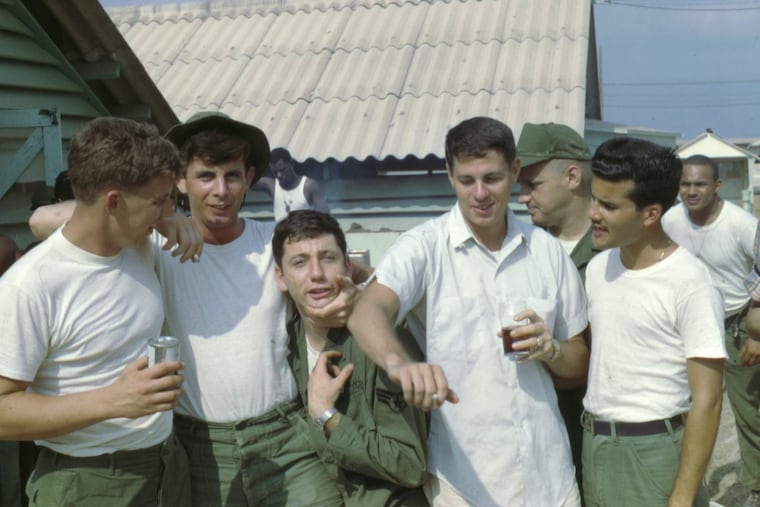Outnumbered 5-1, how U.S. won battle of Bien Hoa Air Base in Vietnam
Martin Strones, a captain during the 1968 attack, said the plan was the only option he had. Perhaps insane, perhaps brilliant - either way, it worked.

From the top of a water tower to the middle of the battlefield, Bob Connor and Martin Strones had front-row seats at Bien Hoa Air Base to one of the major turning points of the Vietnam War.
On Jan. 31, 1968, in a series of coordinated attacks across South Vietnam known as the Tet Offensive, about 85,000 Viet Cong and North Vietnamese soldiers led surprise raids on cities, military installations, and government buildings — including the presidential palace, the U.S. Embassy, and Bien Hoa Air Base, about 20 miles northeast of Saigon, where U.S. forces were stationed.
The offensive began at Bien Hoa with rockets and mortars raining down on the west end of the base. But they were merely a diversion for the soldiers who were coming out of the jungle to try to penetrate the base from the east and north, according to Strones, a retired colonel in U.S. Air Force Security Forces, who had been a captain at Bien Hoa during the Tet Offensive.
Not only were the U.S. servicemen at Bien Hoa outnumbered 5-1, but they also had no crew-served weapons, no armored vests, and no armored vehicles, according to an after-action report by Lt. Col. Kent Miller.
For 12 hours during the attack, Connor, a sergeant with the Security Forces, was alone atop the water tower, frustrated that he could do little from his position.
"It's dark, so there's not too much you can see. You can see trace rounds, mortars, and rockets going off. You can see a war going on, but you can't see the people," he said. "And I can hear all the radio transmissions. … You could tell in their voices, they were scared."
Meanwhile, Miller ordered Strones to set up a counterattack against the 38 enemy soldiers who had penetrated deepest into the base and taken over a portion of the taxiway and the shack where planes would be armed before takeoff.
Strones led 40 men on the counterattack with nothing but an 18-inch-high pile of dirt for cover.
"So we crawled out across the taxiway … but unfortunately," he said, "the enemy saw what we were doing and started shooting at us."
Strones and his men had an M-79, a 40-by-46mm grenade-launcher that could fire flares, tear gas, explosives, and shotgun rounds.
With the enemy in the grass, Strones and his men shot magnesium flares to catch the grass on fire. Then they shot over tear gas, followed by high explosive rounds to make a loud boom.
That was Strones' plan of distraction.
"If something really big hits behind you, you're going to turn around and see what that is," Strones said. "I told the troops … as soon as it explodes, we all stand up and run more than a quarter of mile, and we're going to assault those guys, and we're either going to win or lose."
Strones said it was the only option he had. Perhaps insane, perhaps brilliant, either way, it worked. His men captured or killed all 38 enemy fighters. He lost one of his men in the charge. Strones, for his actions, was awarded the Silver Star for valor in combat.
"I'm sure every single person that got up and ran with me that day understood that we were facing a high probability that we were going to be killed," he said. "My job was to lead that charge so they knew their officer was out in front, not standing behind them."
The battle continued until after dawn, when the Security Forces were able to secure the base with help from the Army's 145th Aviation Battalion, according to Miller's report.
During the battle, 139 North Vietnamese and Viet Cong soldiers were killed, and 25 were taken prisoner of war. Four U.S. fighters had been lost, according to the Vietnam Security Police Association's website.
Often referred to as a turning point of the Vietnam War, the Tet Offensive was a military defeat for the North Vietnamese and Viet Cong forces and a media disaster for the U.S. government. The blood that was spilled across Vietnam during the Tet — and captured on film by U.S. news media — soured public opinion on the war and proved to many people that the fight was far from over.
"Who won and who lost in the great Tet Offensive against the cities?" Walter Cronkite asked on the CBS Evening News in February 1968. "I'm not sure. The Viet Cong did not win by a knockout. But neither did we."